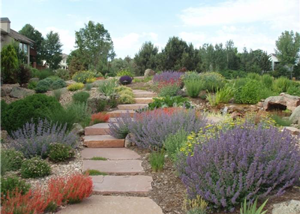6 Tips for an Eco-Friendly Lawn
We’re well into spring and lawn care is on the minds of many Long Islanders. Fertilizer is often thought of as a key ingredient to a healthy, vibrant lawn. But fertilizer use, especially improper application, has some drawbacks. Excess fertilizer pollutes our waterways, negatively impacts aquatic life and interferes with fishing, swimming and boating.
As you may already know, fertilizer is the second leading source of nitrogen contamination of Long Island waters. The Long Island Nitrogen Action Plan Fertilizer Management Workgroup was convened to help draft recommendations for best practices that would balance residents’ interest in having a green and healthy lawn with the immediate need to reduce nitrogen loads to Long Island’s surface waters and groundwater. The recommendations, specific to turf grass fertilizers, have been finalized and are available on the NYSDEC’s website.
In this issue of the LINAP newsletter, we discuss several ways to care for your lawn while protecting coastal waters, as well as, our drinking water supply. It’s important to first note that lawns are not a natural landscape feature and usually require high maintenance. With that being said, if having a lawn is your preferred landscape option, then following the suggestions listed below will help to reduce the likelihood of overapplying fertilizer and, therefore, the amount of excess nitrogen that enters groundwater and surface water.
-
Don’t start fertilizing! Do you like the way your lawn looks currently? If your answer is “Yes”, then you don’t need to fertilize at all! Many lawns do not need any added fertilizer to allow the homeowner to be happy with it.
-
Keep those grass clippings on your lawn. Grass is 80 percent water and so it takes a short period of time for clippings to decompose and provide natural, slow-release nitrogen for a thriving, healthy lawn. Mulching mowers finely chop grass into small pieces which get deposited into the lawn and decompose quickly. Leaving grass clippings on the lawn allows you to lessen the amount of fertilizer you apply by up to 25 percent. To facilitate the decomposition process, never cut off more than the top one-third and keep the height of the grass at least three inches high, which encourages deeper, healthier roots.
-
Apply less fertilizer to your lawn. If you decide to use fertilizer, especially on a well-established lawn, then apply one-third to one-half the amount recommended on the fertilizer bag. After two weeks, if you are not satisfied with the way your lawn looks, you can apply a little more. If you are satisfied, then you applied the right amount. Nice work!
-
Calibration is key. If you choose to fertilize, you’ll need to calibrate your spreader in order to deliver fertilizers at the correct application rates. Equipment used to spread fertilizer should be calibrated for a single application rate of a maximum of 0.6 pounds of total nitrogen per 1,000 square feet at least once annually or each time fertilizer products are changed. Don’t sweat the math though – current products on the shelf typically recommend 0.8 to 1.0 pounds of nitrogen per 1,000 square feet, so applying one-half of that amount will allow you to meet the 0.6 application rate. Alternatively, if math is your strong suit, calibration directions are available on the Cornell Cooperative Extension of Suffolk County website.
-
Timing is everything. If you are going to fertilize, then apply it at the right time – close to Labor Day and/or Memorial Day. Fertilizer shouldn’t be applied during the hottest summer months when grass is dormant. Nor should it be applied before April and after mid-October. Grass simply cannot efficiently absorb fertilizer at this time so don’t bother trying – you’ll just waste fertilizer and money. On Long Island, if you fertilize once a year, it makes the most sense to do so around Labor Day.
-
Shrink your lawn. Consider reducing the lawn area requiring fertilizer. One of the most effective ways Long Islanders can do their part to protect local water resources, is to replace their lawn or a portion of it with less water-intensive landscaping, also known as “xeriscaping.” Homeowners and businesses in the western U.S. now embrace xeriscaping after originally giving it the side-eye; Long Islanders can make the same adjustment. Xeriscaping, which makes use of native plant species, requires little to no fertilizer and can help to absorb and filter rainwater. Also, xeriscaping is aesthetically pleasing and can increase property value.

Image Source
LINAP Recommendations for Nitrogen Fertilizer Applications on Residential and Commercial Turfgrass
If you are interested in taking a deeper dive into this subject, check out the recently posted Long Island Nitrogen Action Plan Recommendations for Fertilizer Nitrogen Applications on Residential and Commercial Turfgrass. You can find them on the NYSDEC's website.
The recommendations take a holistic approach, looking at how lawns should be managed to be protective of the environment. For instance;
- Limiting the dates fertilizers can be applied;
- Clarifying the minimum amount of slowly available nitrogen that should be in lawn fertilizer;
- Clarifying the maximum amount of nitrogen that should be applied in an individual application, as well as, the maximum amount of nitrogen applied annually; and
- Improving fertilizer product packaging so that it is more easily understood by homeowners and professionals. And would be “right-sized” for a typical LI lawn spreading fertilizer at 0.6 pound per 1,000 square feet.
To sign up for the LINAP Newsletter, visit the LINAP webpage or click here.
|


